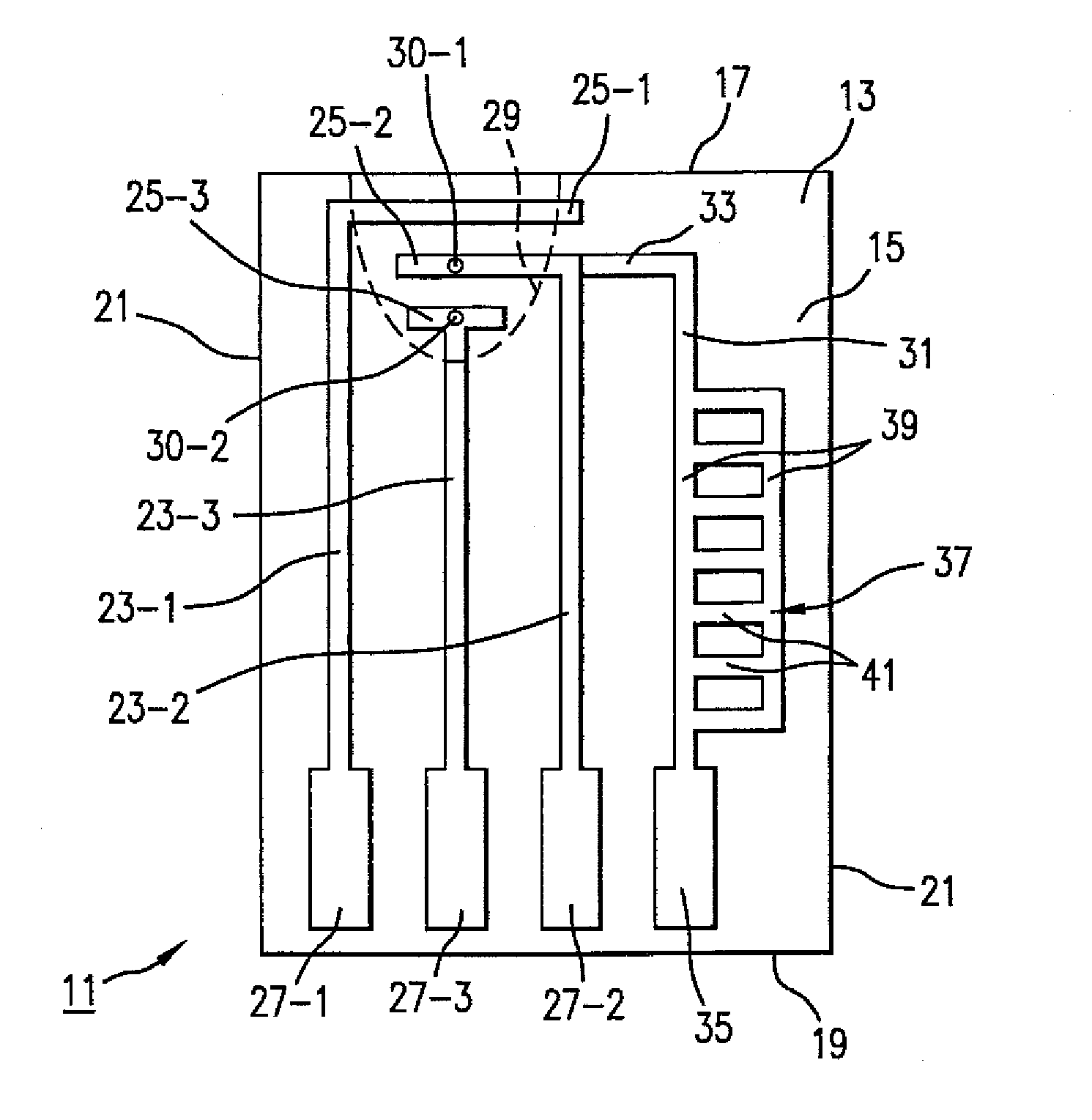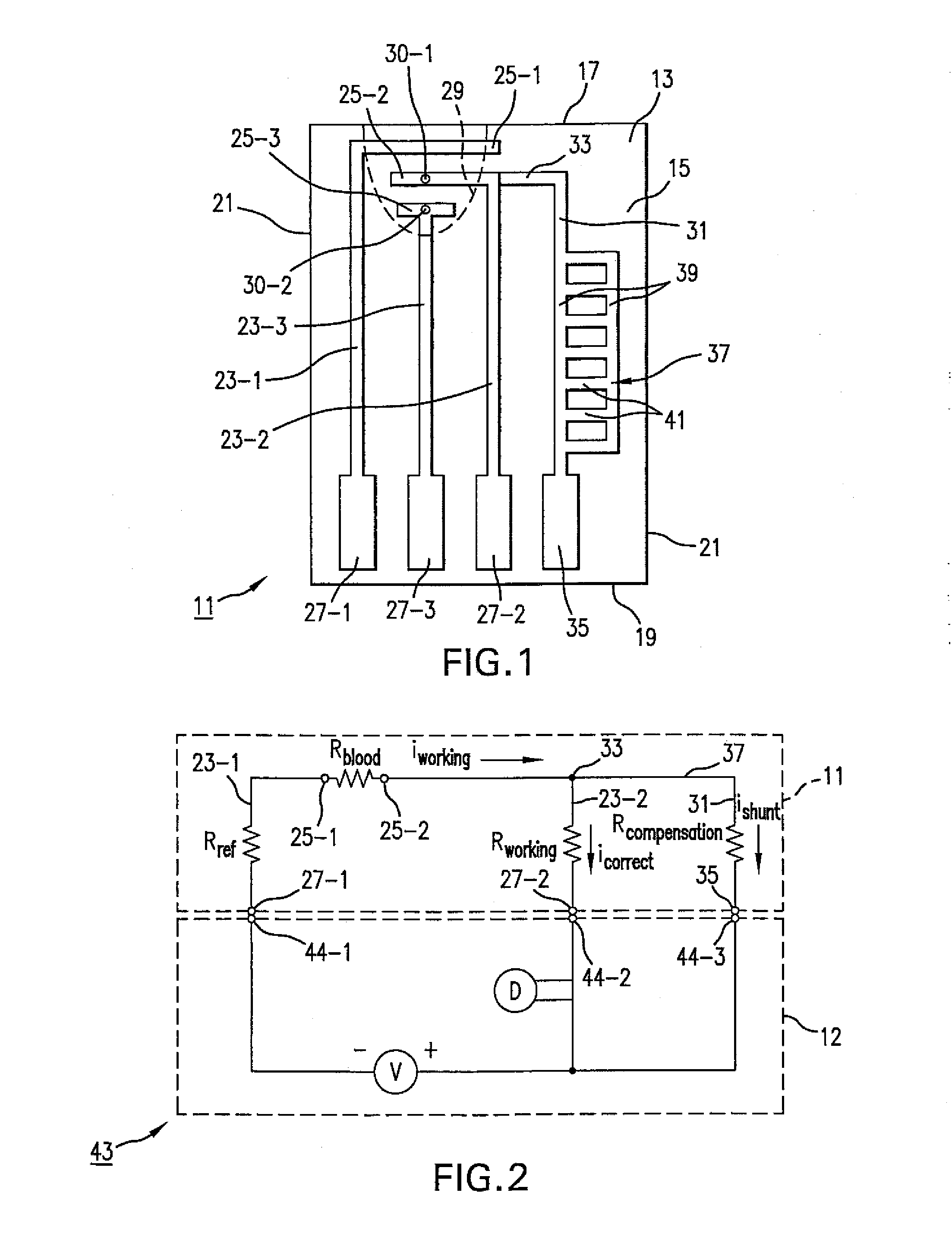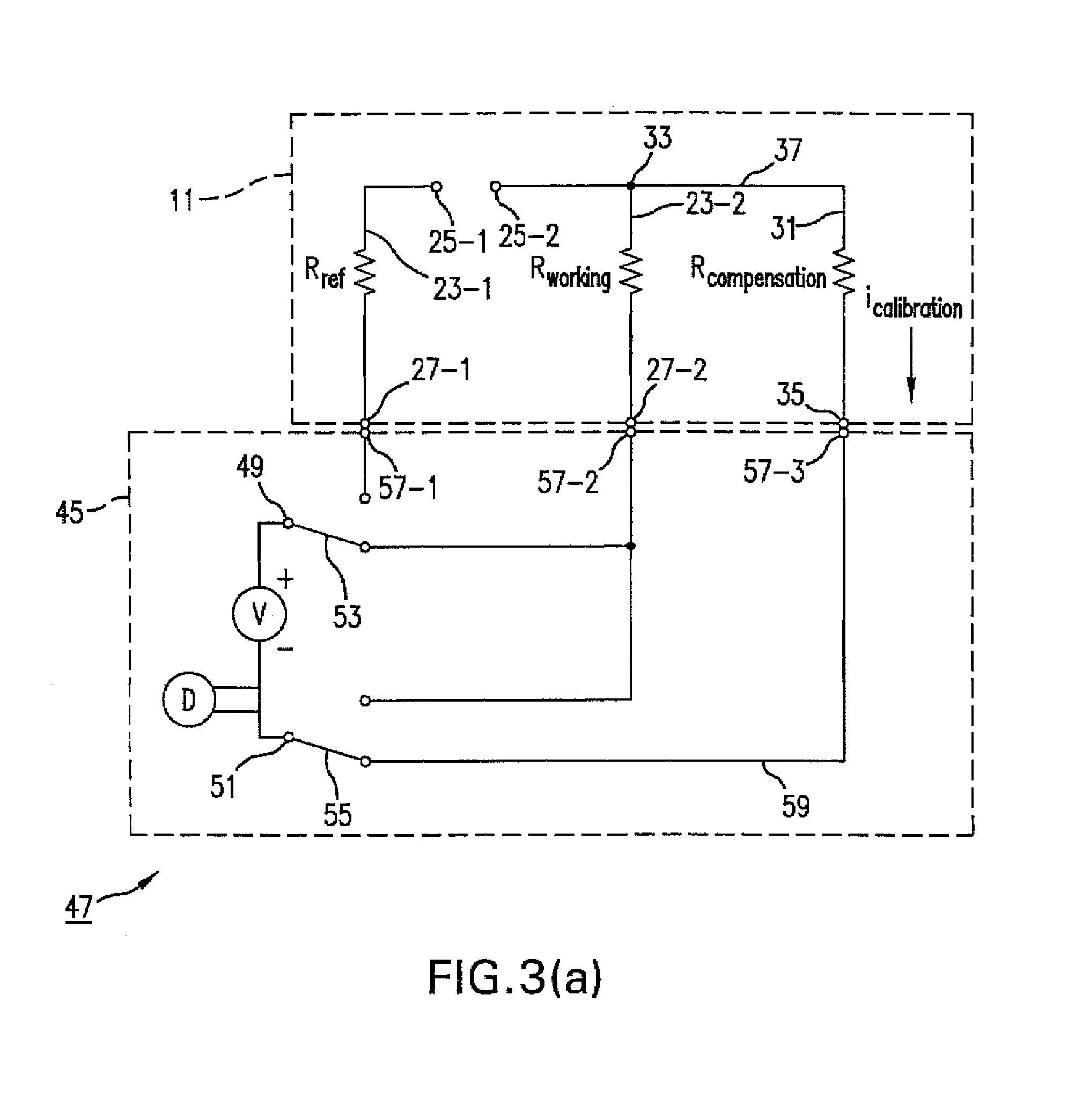Analyte test sensor and method of manufacturing the same
a technology of analyte test and sensor, which is applied in the field of electrochemical test sensors, can solve the problems of piercing of the skin of the patient, inaccurate glucose level readings calculated therefrom, and variances of different batches of test strips, etc., and achieves the effect of convenient use and low manufacturing cos
- Summary
- Abstract
- Description
- Claims
- Application Information
AI Technical Summary
Benefits of technology
Problems solved by technology
Method used
Image
Examples
first embodiment
[0034]Referring now to the drawings, there is shown in FIGS. 1 and 2 an electrochemical test sensor that is constructed according to the teachings of the present invention, the electrochemical test sensor being identified generally by reference numeral 11. In use, test sensor 11 can be used, in conjunction with a compatible analyte test meter 12, to calculate the concentration of a particular analyte in a test sample. Furthermore, as a principal feature of the present invention, test sensor 11 is provided with means for correcting test result inaccuracies which are the result of common variances in manufacturing, as will be described further below.
[0035]As seen most clearly in FIG. 1, test sensor 11 (also referred to herein as test strip 11) includes a unitary, non-conductive substrate 13 which is preferably constructed of plastic using conventional molding techniques. Substrate 13 is preferably formed into a rectangular strip which includes a substantially flat top surface 15, a su...
second embodiment
[0077]It is to be understood that the particular construction of test strip 11 could be modified without departing from the spirit of the present invention. For example, referring now to FIG. 4, there is shown a test strip constructed according to the teachings of the present invention, the test strip being identified by reference numeral 111. As will be described further below, test strip 111 is similar to test strip 11 in that test strip 111 includes on-board means for performing digital calibration.
[0078]Test strip 111 is identical in construction to test strip 11 in all respects with one notable exception. Specifically, test strip 111 includes a compensation electrode 131 of a slightly different design than compensation electrode 31 in test strip 11.
[0079]Compensation electrode 131 is similar in construction to compensation electrode 31 in that compensation electrode 131 includes a first end 133, a second end 135 and a resistive ladder 137 formed thereinto along a portion of its...
PUM
| Property | Measurement | Unit |
|---|---|---|
| concentration | aaaaa | aaaaa |
| resistance | aaaaa | aaaaa |
| resistance value | aaaaa | aaaaa |
Abstract
Description
Claims
Application Information
 Login to View More
Login to View More - R&D
- Intellectual Property
- Life Sciences
- Materials
- Tech Scout
- Unparalleled Data Quality
- Higher Quality Content
- 60% Fewer Hallucinations
Browse by: Latest US Patents, China's latest patents, Technical Efficacy Thesaurus, Application Domain, Technology Topic, Popular Technical Reports.
© 2025 PatSnap. All rights reserved.Legal|Privacy policy|Modern Slavery Act Transparency Statement|Sitemap|About US| Contact US: help@patsnap.com



